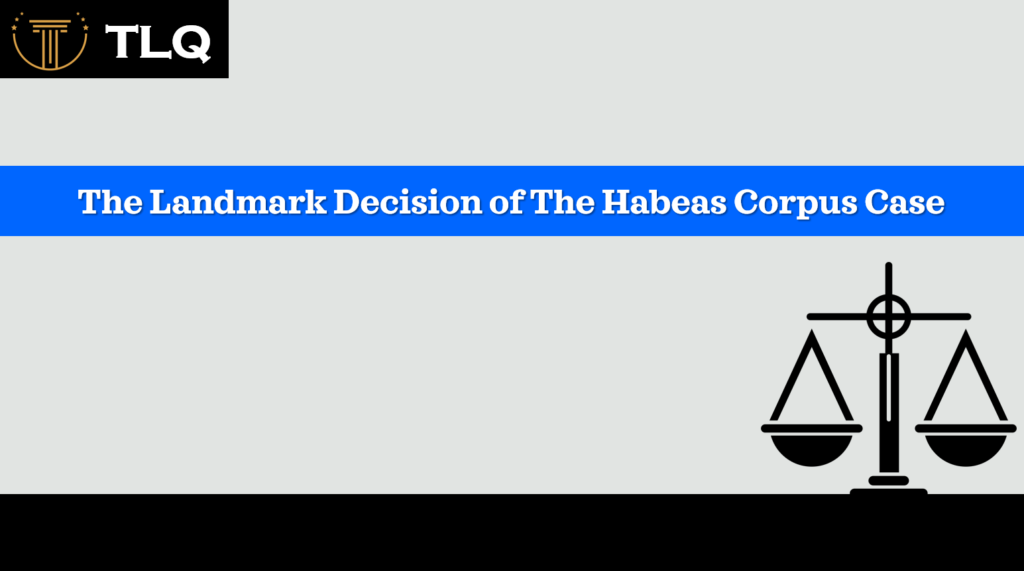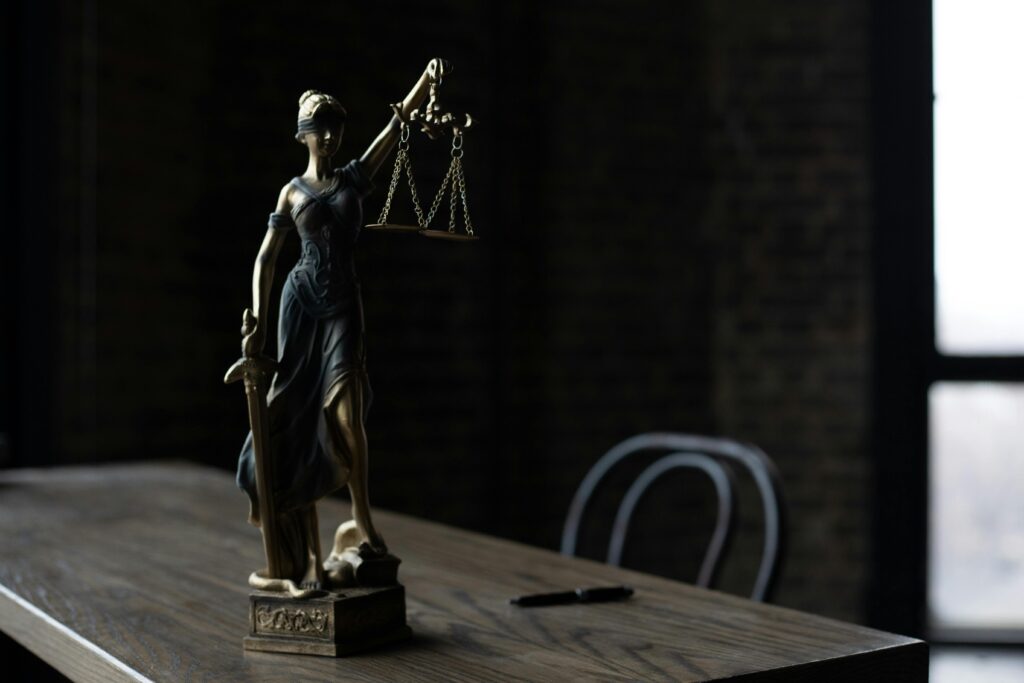Published On: October 12th 2025
Authored By: Sam S Siryon
Apeejay Stya University-Gurgaon
Abstract:
The power of courts to examine the actions of the legislature and the executive branches of the government or to examine the constitutionality of laws and government actions is known as Judicial review. This power allows the courts to declare laws or actions invalid if they are found to be inconsistent with the constitution, ensuring that the actions of the government remains within the bonds of the law and protects fundamental rights. This concept is the cornerstone and a fundamental pillar of every modern democracies. Judicial review function as a check and balance mechanism to ensure legislative and executive actions align with the constitution.
A hypothetical example of the concept: suppose the legislative branch of government pass a legislation (law) that limits a person’s movement or that such laws restrict freedom of movement. Any person who feels that such laws are violative of his/her fundamental rights under the constitution, may initiate a complaint at either the High Court of the Hon’ble Supreme Court. The court (judiciary) will now review/evaluate the law under question to determine whether such laws are violative or the constitution or not. Provided that it is established that such laws are violative of constitutional principles, the court will declare it Unconstitutional and/or strike it down.
This action of the court can be deemed as the concept of Judicial review in action. Judicial review has been declared as a basic feature of the constitution and therefore, it cannot be curtailed. This concept can be traced to have originated from the United States while the idea of courts reviewing the validity of laws can be traced to have been practiced in the English common law system. The structure and principles of the US Constitution and the separation of powers and the supremacy of the Constitution itself can be concluded to have paved the way for the development of the concept of Judicial review.
English Common Law System:
This is a legal system that forms the foundation for the legal systems of many countries, particularly those formerly part of the British Empire, including the United States, Canada, and Australia. This system relies on judicial precedents and decisions rather than codified statutes.
In the English common law system, judicial review is a mechanism for ensuring the legality of the actions taken by public bodies, allowing courts of the court’s hierarchy to review decisions made by administrative bodies or officials. This ensures that such officials stay within their legal powers and act reasonably. Though the Parliament is considered supreme, judicial review acts as a check on the executive and administrative branches, that upholds the rule of law and protect individual rights. England operates under the principle of Parliamentary supremacy-; the parliament is the supreme lawmaking body. Nonetheless, judicial review acts as a safeguarding instrument that ensures that parliamentary actions are lawful. Courts do not question the wisdom of the law, but rather whether it was made legally and whether the decision-making process was fair.
Key Words: Judicial review, Marbury v. Madison, Constitution of India, Separation of Powers, Checks and Balances, Basic Structure Doctrines and Parliamentary Supremacy vs Judicial Review.
Introduction:
Although the idea of courts reviewing laws can be traced back to have originated from the English common law system however, the doctrine judicial review was itself formalized as a crucial part of the legal system as it was established in the United States particularly, in the landmark case of Marbury v. Madison, upon which the concept was adapted and incorporated into the Indian legal system. This landmark arose when William Marbury – a justice of the Peace appointed by the then President- Adams, sued the Secretary of State James Madison for refusing to deliver his commission. While the court ultimately sided with James Madison, the significance of the decisions lies in Chief Justice John Marshall’s assertion of the court’s authority to review and potentially invalidate laws that conflicts with the constitution, solidifying the Judiciary’s role as a co-equal branch of government and the doctrine of checks and balances on other branches.
The Marbury v Madison 1803
The case involved William Marbury, who was appointed as Justice of the Peace by outgoing President John Adams, but his commission was not delivered before President Thomas Jefferson took office. Jefferson instructed his Secretary of State, James Madison, not to deliver these commissions. Marbury petitioned the Supreme Court to issue a writ of mandamus (directing a public official to perform a specific legal duty) to compel Madison to deliver his commission[1].
In the ruling, Chief Justice John Marshall faced a difficult political situation. The Court ruled that while Marbury was entitled to his commission, it could not issue the writ because it found part of the Judiciary Act of 1789[2], which gave the Court this power, unconstitutional. Marshall argued that this section conflicted with Article III of the Constitution[3], establishing the Constitution’s supremacy. This led to Marbury not receiving his commission. This case highlighted four distinct principles/ doctrines of today’s modern democracies:
The Concept of Judicial review: This was the most important outcome of the case, as it did establish the Supreme Court’s power to review laws and determine its consistency with the constitution. Though this authority was not explicitly mentioned in the Constitution but it was asserted by Chief Justice John Marshall in his decision.
The Principles of Checks-and-Balances: When the Court declares any laws unconstitutional in the first instance, the court demonstrates its role in the system of checks and balances which is designed to prevent any one branch of government from becoming too powerful or doing the assigned duties of the other branches.
The Doctrine of Separation of Powers: The Marbury v Madison case also clarified the boundary between the Judicial and the Executive branches of government, it emphasized the judiciary’s role in interpreting the laws, and the executive’s role in enforcing the law, emphasizing that the Executive branch of government acts with its constitutional limit and authority.
The Doctrine of Constitutional Supremacy: The case reinforced the idea that the constitution is the supreme law of the land, and that any law conflicting with it is deemed invalid.
Another significant case was the 1954 Brown v Board of Education wherein, the Supreme court declared the racial segregation in public schools unconstitutional thereby, overturning the doctrine of “separate but equal” which was established in the Plessy v. Ferguson case of 1896[4].
Research Methodology:
This paper uses primary sources such as case laws, and constitutional provisions as well as secondary sources from journals, articles, and websites to explain the issue of Judicial review in its related context. By nature of explanation, this paper is both explanatory and exploratory in nature as it explains and explores various sources relative to the subject under discussion.
Review of Literature:
The constitution of India explicitly provides for judicial review through the provisions of Articles 13, 32, 131, through 136, 143, 226 and 246 respectively[5].
Article 13 provides the Judiciary with the powers to declare laws unconstitutional if they are inconsistent with the fundamental rights of citizens[6].
Article 32 provides the rights of citizens to approach the Supreme Court for constitutional remedies when their fundamental rights have been violated[7].
Article 131 provides the Supreme Court with the exclusive original jurisdiction to entertain matters between the Government of India and any other States, or between one State and another, pertinent to matters involving any question (whether of law or of fact) on which the existence of extent of a legal right depends. It further provides the exclusive jurisdiction of the Supreme Court in regard to questions as to constitutional validity of Central laws[8].
Article 141 states that the decisions of the Supreme Court shall be binding on all courts within the territory of India.
Landmark cases highlighting Judicial review in action:
The Kesavananda Bharati v. State of Kerala 1973 had a significant impact in the Indian legal system as it established the Basic Structure Doctrine, which limits the parliament’s powers to amend the constitution and it reinforces judicial review and safeguards fundamental rights against uncheck unchecked authorities. The Establishment of the Basic Structure Doctrine asserts that although parliament has the power to make constitutional amendments, however it cannot alter the fundamental frameworks of the constitution itself. This is inclusive of constitutional supremacy, the rule of law, separation of powers, federalism, judicial independence and fundamental rights[9].
The case of Maneka Gandhi v Union of India 1978 had a significant impact on the Indian constitution as it expanded the scope of Article 21 of the Constitution. As Article 21 guarantees the right to life and personal liberty, the court held that the right to travel abroad is inclusive of the right to personal liberty and that any law infringing on this right should be fair, just and of course, reasonable. This judgement broadened the understanding of fundamental rights and strengthened the role of judicial review in protecting them.
The 1980 Minerva Mills Ltd. v. Union of India case reaffirmed the Basic Structure Doctrine and further clarified that Judicial review is an essential feature of the constitution as the court struck down certain provisions of the 42nd Constitutional Amendment. This highlighted the importance of judicial review in maintaining constitutional balance and preventing excessive legislative powers[10].
Another significant case is the case of S.R Bommai v. Union of India of 1994 wherein the Honorable Supreme Court held that the power of judicial review extends to examining the validity of the imposition of the President’s rule and the limit of the Central government’s authority over States.
Indira Nehru Gandhi v. Raj Narain 1975, which involved an amendment to the Elections law. This case reaffirmed that judicial review is a basic structure of the Indian constitution and that it is essential for upholding the rule of law. In the case, some amendments made to the election laws were struck down, again this action highlighted the Judiciary’s role in arbitrary actions of the Legislature[11].
Conclusion:
Collectively, these cases have established that the Judiciary has the powers and authority to review laws passed by the Legislature and the actions of the Executive, to ensure that they are consistent with the constitutional principles.
The interconnectedness between the concept of judicial review with the doctrine of separation of powers:
It is understood in concept that Judicial review and the doctrine of separation of powers are intrinsically related as they form the very foundation of constitutional democracies. While the doctrine of separation of powers ensures that various branches of government inclusive of the legislative, executive and the Judiciary have distinct roles and responsibilities, judicial review acts as a critical mechanism to check for potential abuses of power and ensure that all branches adhere to the constitution.
The concept of judicial review lies in the supremacy of the Constitution of the land. Since, the Judiciary is the guardian of the Constitution, thereby; it is under its purview to check actions, which are inconsistent with the Constitution. The tool of judicial review empowers the judiciary to struck down any action, which is in conflict with the Constitution[12].
References:
- Marbury vs. Madison (1803) https://blog.ipleaders.in/marbury-vs-madison-1803/
- Judiciary Act of 1789| Act of Congress| United States Congress
- Constitution of the United States
- Judicial review|brown vs Board of education https://www.studysmarter.co.uk/explanations/law/uk-legal-system/role-of-judiciary/#:~:text=Example%20of%20Judicial%20Review:%20In%20the%20case,reviewed%20and%20potentially%20overturned%20by%20the%20judiciary
- Judicial review in India https://en.wikipedia.org/wiki/Judicial_review_in_India#cite_note-Austin1999-1
- Constitution of India| Article 13|Supreme Law
- Constitution of India|Article 32|Supreme Law
- Constitution of India|Article 131|Supreme Law
- Keshavananda Bharati Case 1973| Summary and Impacts| UPSC Notes| Vajiram Editor| Jan 25, 2025 https://vajiramandravi.com/upsc-exam/kesavananda-bharati-case/#:~:text=Kesavananda%20Bharati%20Case%20Summary,-The%20case%20was&text=The%20Supreme%20Court’s%20judgment%20was,or%20destroy%20its%20basic%20structure.
[1] Marbury vs. Madison (1803) https://blog.ipleaders.in/marbury-vs-madison-1803/
[2] Judiciary Act of 1789| Act of Congress| United States Congress
[3] Constitution of the United States
[4] Judicial review|brown vs Board of education https://www.studysmarter.co.uk/explanations/law/uk-legal-system/role-of-judiciary/#:~:text=Example%20of%20Judicial%20Review:%20In%20the%20case,reviewed%20and%20potentially%20overturned%20by%20the%20judiciary
[5] Judicial review in India https://en.wikipedia.org/wiki/Judicial_review_in_India#cite_note-Austin1999-1
[6] Constitution of India| Article 13|Supreme Law
[7] Constitution of India|Article 32|Supreme Law
[8] Constitution of India|Article 131|Supreme Law
[9] Keshavananda Bharati Case 1973| Summary and Impacts| UPSC Notes| Vajiram Editor| Jan 25, 2025 https://vajiramandravi.com/upsc-exam/kesavananda-bharati-case/#:~:text=Kesavananda%20Bharati%20Case%20Summary,-The%20case%20was&text=The%20Supreme%20Court’s%20judgment%20was,or%20destroy%20its%20basic%20structure.
[10] Minerva Mills v. Union of India https://en.wikipedia.org/wiki/Minerva_Mills_v._Union_of_India
[11] Indira Nehru Gandhi v. Raj Narain 1975 SC 2299, https://www.drishtijudiciary.com/landmark-judgement/constitution-of-india/indira-nehru-gandhi-v-raj-narain-1975-sc-2299
[12] Separation of powers | Definition & Facts | Britannica https://www.britannica.com/topic/separation-of-powers




